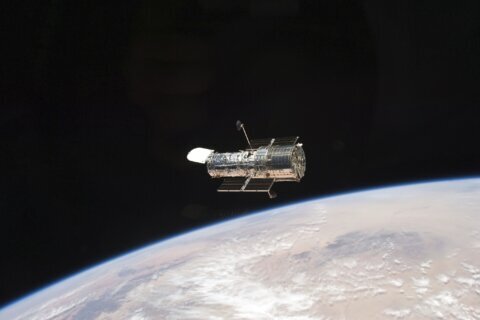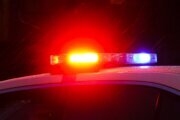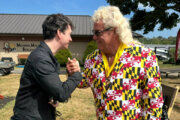NASA and SpaceX have successfully launched a manned flight of a Dragon spacecraft to the International Space Station from the Kennedy Space Center in Cape Canaveral, Florida. A launch attempt earlier this week was scrubbed due to bad weather.
A rocket ship built by entrepreneur Elon Musk’s company, it was the first launch of American astronauts from U.S. soil in almost nine years — since the Space Shuttle Atlantis launched in 2011. It is the first time a commercial spacecraft has carried NASA astronauts into orbit.
The rocket that helped carry them to orbit, a SpaceX Falcon 9, successfully touched back down after separating from the Dragon spacecraft.
SpaceX becomes the first private company to launch people into orbit, a feat achieved previously by only three governments: the U.S., Russia and China.
The crew is expected to reach the International Space Station Sunday morning.
At a post-liftoff rally held at NASA’s massive 525-foot-high Vehicle Assembly Building, President Donald Trump commended Musk and proclaimed: “Today we once again proudly launch American astronauts on American rockets, the best in the world, from right here on American soil.”
He vowed the U.S. will be the first to land on Mars, promising a “future of American dominance in space.”
Vice President Mike Pence, who also witnessed the launch, said that as the nation deals with the coronavirus and racial strife, “I believe with all my heart that millions of Americans today will find the same inspiration and unity of purpose that we found in those days in the 1960s” during Apollo.
The first attempt to launch the rocket, on Wednesday, was called off with less than 17 minutes to go in the countdown because of lightning. On Saturday, stormy weather threatened another postponement for most of the day, but the skies began to clear just in the time.
SpaceX has been launching cargo capsules to the space station since 2012.
Under the new corporate-public model, aerospace companies design, build, own and operate spaceships, and NASA is essentially a paying customer on a list that could eventually include non-government researchers, artists and tourists. (Tom Cruise has already expressed interest.)
Saturday’s mission is technically considered a test flight. The next SpaceX voyage to the space station, set for the end of August, will have a full, four-person crew: three Americans and one Japanese.
The first flight was originally targeted for around 2015. But the project encountered bureaucratic delays and technical setbacks. A SpaceX capsule exploded on the test stand last year. And Boeing’s first Starliner capsule ended up in the wrong orbit and was nearly destroyed during a test flight in December.
The Associated Press and CBS News contributed to this report.







